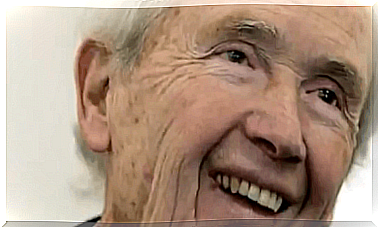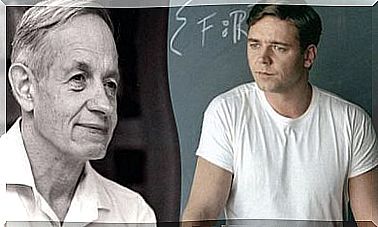Kohlberg’s Theory Of Moral Development
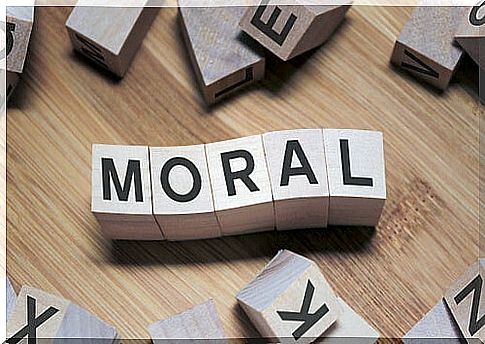
We have all developed our own and non-transferable morality: values that not only separate “evil” from “good” in the abstract world, but also influence our behaviors, perceptions and thoughts . We could even say that it can be so internalized as to influence our emotions. One of the most important and influential models that attempt to explain the development of our morals is Kohlberg’s theory of moral development.
On the other hand, since everyone has morals, establishing a universal has always been one of the great questions that has preoccupied many philosophers and thinkers. And we can observe from Kantian perspectives of morality, based on group benefit, to utilitarian perspectives, inspired by individual good.
The psychologist Lawrence Kohlberg wanted to move away from the content of morality and study how it develops in people. He didn’t care what was right or wrong, he cared how we achieved that idea of right or wrong. Through a multitude of interviews and studies, he observed that the construction of morale increases as children grow older. As with other skills, such as language or reasoning ability.
In Kohlberg’s theory of moral development, the conclusion is reached that moral development passed through three levels: preconventional, conventional and postconventional. Each of which is divided into two stages. It is important to understand that not everyone goes through all stages and not everyone reaches the last level of development. Below we explain in detail each of the stadiums.
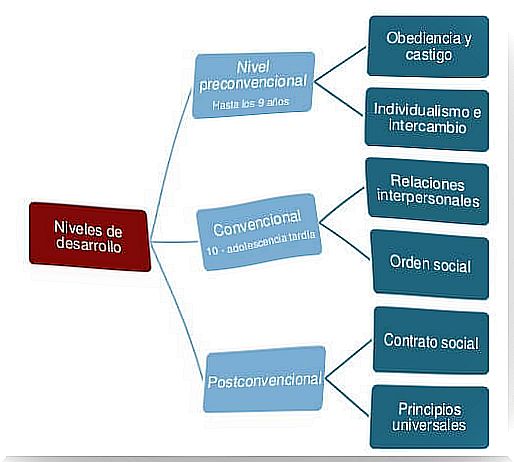
Kohlberg’s theory of moral development
Orientation towards punishment and obedience
This stage of Kohlberg’s theory of moral development is part of the preconventional level. Here we find that the person delegates all moral responsibility to an authority. The criteria of what is good or bad are given by the rewards or punishments granted by the authority. A child may think that not doing homework is wrong because his parents punish him if he does not do it.
This thinking hinders the ability to assume that there may be moral dilemmas: statements that do not have a morally clear answer. This is because everything is raised from the sole point of view of authority, which the person legitimizes. Here we find the simplest level of moral development, where differences of interests and intentions of behavior are not contemplated. At this stage, the only thing that is relevant are the consequences: reward or punishment.
Orientation towards individualism or hedonism
At this stage of Kohlberg’s theory of moral development, the idea that interests vary from one individual to another already appears. And although the criteria for deciding what is wrong or good are still the consequences of the acts, they are no longer marked by others. Now the individual will think that everything that brings him some benefit will be good , and that which involves a loss or discomfort is bad.
Occasionally despite the selfish view of this stage in Kohlberg’s theory of moral development, the individual may think that it is okay to meet the needs of others. But only when there is a pragmatic reciprocity or guarantee of it. That is, the thought that if I do something for another, the other will have to do something for me. This stage is somewhat more complex than the previous one, because the individual no longer delegates to another for the construction of his morality, although the reasons remain simple and selfish.
Orientation towards interpersonal relationships
At this stage the conventional stage of moral development begins. As the individual begins to have increasingly complex relationships, he has to abandon that egoism of the previous stage. The important thing now is to be accepted by the group, therefore morale will revolve around it.
For the person who is in this stage, the correct thing will be what pleases or helps others. Here what begins to matter are the good intentions of the behaviors and to what extent they are approved by others. The definition of morality at this stage is based on being a “good person”, loyal, respectable, collaborative and pleasant.
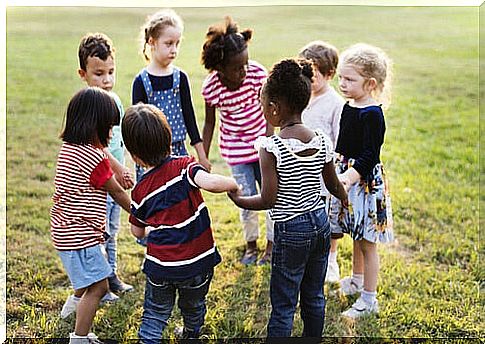
There is a very curious test that detects when children reach this stage. They consist of watching two videos:
- In one there is a child who does a mischief (causes a small evil, but on purpose ).
- In another a different child appears who also causes a greater evil, but this time without intention (E. He stains or throws a glass without wanting to).
Children who have already included intention as a modulating variable of their moral judgments will say that the one who has acted worst has been the child who wanted to cause the harm, even if it was unintentionally. On the other hand, children in earlier stages of Kohlberg’s theory of moral development will say that the worst child is the one who has caused the greatest harm, regardless of the fact that he or she did it inadvertently.
Orientation towards social order
The individual stops having a group-based vision, to a society-based vision. It no longer matters what the groups or people around me like. The criterion of what is good or bad is based on whether the behavior maintains the social order or hinders it. The important thing is that society is stable and there is no chaos in it.
Here we find a strong respect for laws and authority. Since these restrict the freedom of the individual in favor of the social order for our good. Morality goes beyond personal ties and is related to current legislation, which should not be disobeyed, to maintain a social order.
Orientation towards the social contract
Here we enter the last level of moral development, a stage that very few individuals reach throughout their lives. Here morality begins to be understood as something flexible and variable. For these individuals, good or evil exists because a society has created a contract that establishes moral criteria.
People at this stage understand the reason for the laws and based on that they criticize or defend them. In addition, these laws for them are not eternal and are subject to improvement. For people or children who are in this stage, morality implies voluntary participation in an accepted social system, since the creation of a social contract is better for oneself and others than its lack.
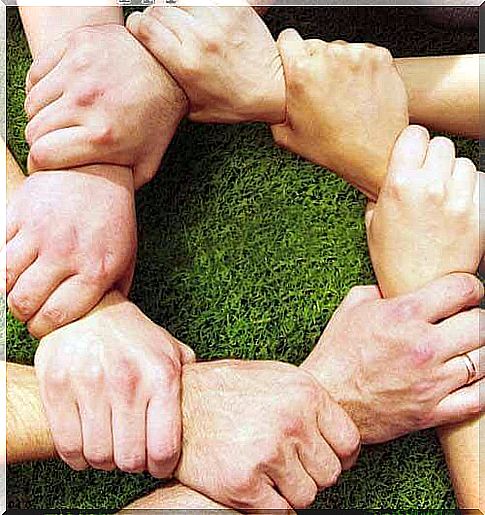
Orientation to the universal ethical principle
This stage of Kohlberg’s theory of moral development is the most complex of moral development, where the individual is the one who creates his own ethical principles that are comprehensive, rational and universally applicable. These principles go beyond the laws, and are abstract moral concepts difficult to make explicit. The person builds his moral according to how he believes that society should exist and not how society imposes on him.
An important aspect of this stage is the universality of the application. The individual applies the same criteria to others as himself. And he treats others, or tries, as he would like to be treated. Since if this is not fulfilled we would be at a much simpler level, similar to the stage of orientation to individualism.
According to Enrique Barra in this article published in the Latin American Journal of Psychology, Kohlberg’s theory is a “highly relevant professional tool” for psychology professionals. Not only because of the knowledge that it contributes to them about the moral development itself, but also because of the responsibility that clinicians have in order to favor and promote a “harmonious and integral development of the individual”.
Especially when we find ourselves in a world that is constantly changing and evolving. Likewise, Barra assures that the foundation of this theory supposes a significant enrichment with regard to the understanding of the psychological complexity of people.
Now, since we know how morality develops in people according to Kohlberg’s theory of moral development, we have the opportunity to make a personal reflection, at what stage of moral development are we?





